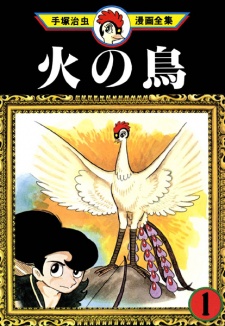Alternative TitlesSynonyms: Hi no Tori: Reimei-hen, Phoenix: Dawn Japanese: 火の鳥 More titlesInformationType: Manga
Volumes: 16
Chapters: 19
Status: Finished
Published: Dec 20, 1966 to Feb 1988
Demographic:
Shounen
Serialization:
Manga Shounen Authors:
Tezuka, Osamu (Story & Art) Statistics Ranked: #732 2 based on the top manga page. Please note that 'R18+' titles are excluded. Popularity: #809
Members: 22,430
Favorites: 783 Available AtResources | Recommendations
|














